The design thinking movement has had a profound impact on various industries, including architecture. As a problem-solving approach that prioritizes user-centricity, collaboration, and creativity, design thinking has challenged traditional architectural paradigms and revolutionized the way architects approach their craft. This essay explores the emergence of the design thinking movement, its core principles, and its connection to architecture. By understanding the evolution of design thinking and its application in architectural practice, we can appreciate its transformative potential in shaping more human-centered and innovative built environments.
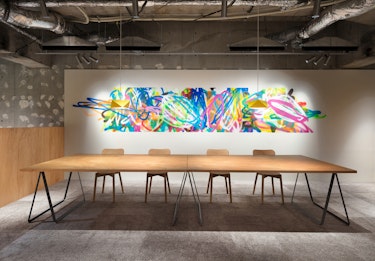
Credit: ArchDaily
The Birth of the Design Thinking Movement
The origins of design thinking can be traced back to the mid-20th century, when designers and scholars started to explore more empathetic and interdisciplinary approaches to problem-solving. One of the earliest influences on design thinking was the Bauhaus movement, which emerged in Germany in the early 20th century. Bauhaus encouraged the integration of art, craft, and technology, emphasizing the relationship between form and function. This holistic approach laid the groundwork for future design thinkers who sought to break down the silos between disciplines.
In the 1960s and 1970s, design thinking began to gain more prominence, especially through the works of designers like Buckminster Fuller and Charles Eames. Fuller's geodesic domes and Eames' groundbreaking furniture designs exemplified the combination of artistic creativity and engineering prowess that became central to design thinking's ethos. Furthermore, the establishment of the Stanford Design Program in the 1950s by industrial designer John Arnold and psychologist William M. Newman was a significant milestone in formalizing design thinking as an academic discipline.

Credit: Stirworld
Core Principles of Design Thinking
Design thinking is not a rigid methodology; rather, it is a flexible, iterative process that focuses on understanding human needs and experiences. While different practitioners and organizations may adapt design thinking to their specific contexts, certain core principles remain consistent across its applications:
- Empathy and User-Centricity: Design thinking emphasizes understanding the needs, desires, and pain points of end-users. By immersing themselves in the users' experiences, architects can gain valuable insights that inform their design decisions.
- Iterative Process: Design thinking involves multiple cycles of ideation, prototyping, testing, and refinement. It encourages architects to embrace failure as a stepping stone towards better solutions.
- Collaboration and Interdisciplinarity: Breaking down traditional silos, design thinking promotes cross-disciplinary collaboration. Architects work with experts from various fields, such as engineers, sociologists, and psychologists, to create holistic and innovative solutions.
- Visualization and Prototyping: Visualizing ideas through sketches, models, and prototypes allows architects to communicate and test concepts rapidly, facilitating feedback and iteration.

Credit: ArchDaily
Design Thinking in Architecture
The adoption of design thinking in architecture has been transformative, empowering architects to rethink traditional design approaches and prioritize human experience. Some key ways in which design thinking has influenced architecture include:
- Human-Centered Design: Design thinking shifts the focus from imposing preconceived ideas onto spaces to understanding how users interact with and experience buildings. This shift has resulted in more inclusive and accessible designs that respond to the diverse needs of individuals and communities.
- Sustainable Architecture: By incorporating empathy and systems thinking, design thinking has encouraged architects to address sustainability challenges. Architects now consider the environmental impact of buildings and aim to create structures that harmonize with their surroundings.
- Adaptive Reuse and Urban Regeneration: Design thinking has encouraged architects to find innovative ways to repurpose existing structures and revitalize urban areas. This approach not only preserves cultural heritage but also reduces waste and fosters community engagement.
- Co-Creation with Stakeholders: Involving stakeholders, including clients, end-users, and communities, throughout the design process has become a hallmark of design thinking in architecture. This participatory approach ensures that the final design reflects the collective aspirations of all involved parties.

Credit: The Architect’s Newspaper
Case Studies of Design Thinking in Architecture
To illustrate the impact of design thinking on architecture, let's examine two prominent case studies:
- The High Line, New York City: The High Line is a public park built on a historic freight rail line elevated above the streets of Manhattan's West Side. Rather than demolishing the old infrastructure, architects and urban planners embraced design thinking principles, creatively transforming the disused rail line into a vibrant green space. The project prioritized the preservation of the structure's industrial heritage while providing a new recreational space for residents and visitors.
- The Eden Project, Cornwall, UK: The Eden Project is an iconic ecological park housed in domed biomes that recreate different climates. Design thinking principles of collaboration and sustainability were central to the project's conception. The architects collaborated with botanists, engineers, and other experts to create a unique environment that educates visitors about ecological challenges and solutions.
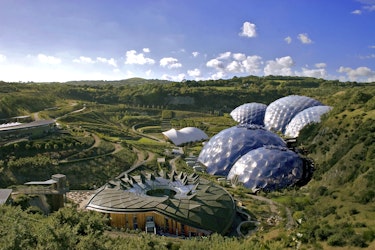
Credit: Eden
Evolution of the Design Thinking Movement
The design thinking movement continued to evolve and gain momentum throughout the latter half of the 20th century and into the 21st century. In the 1980s, design consultancies like IDEO played a pivotal role in popularizing design thinking as a problem-solving approach across industries, not just limited to traditional design disciplines. IDEO's innovative and user-centered solutions for companies like Apple and Polaroid showcased the power of design thinking in addressing complex challenges and creating successful products.
In academia, design thinking gained recognition as an essential component of design education. Top design schools integrated design thinking principles into their curricula, encouraging students to develop a deep understanding of end-users and to consider the broader social and environmental impact of their designs.
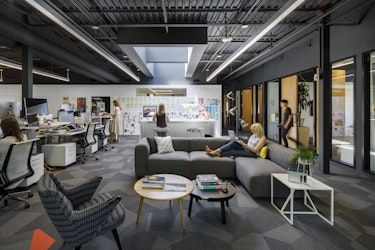
Credit: Hacin + Associates
Design Thinking and Sustainable Architecture
The connection between design thinking and sustainable architecture deserves special attention. As environmental concerns escalated, architects increasingly recognized their responsibility to create buildings that minimize their ecological footprint and contribute positively to the surrounding environment.
Design thinking's emphasis on empathy and systems thinking aligns perfectly with the core principles of sustainability. By putting users' needs at the forefront, architects are more inclined to design spaces that are efficient, resource-conscious, and health-promoting. Sustainable design considers factors like energy efficiency, renewable materials, natural lighting, passive cooling systems, and waste reduction, all of which can be facilitated by applying design thinking methodologies.
For example, the Bullitt Center in Seattle, Washington, is often regarded as one of the greenest commercial buildings in the world. Design thinking principles guided the architects and developers in creating a living building that generates its energy from solar panels and features a rainwater collection system for all its water needs. The building's design focused on maximizing natural light and ventilation, providing a healthy and productive environment for its occupants.
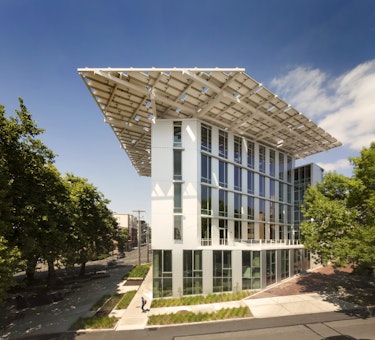
Credit: The International Living Future Institute
Design Thinking and Smart Cities
The concept of smart cities, where technology is harnessed to optimize urban living, has gained traction in recent years. Design thinking plays a crucial role in shaping these cities into more sustainable and user-friendly environments.
For instance, the redesign of Songdo International Business District in South Korea incorporated design thinking to create a highly connected and accessible urban area. By integrating smart technologies, such as real-time data monitoring for traffic management and energy usage optimization, the architects aimed to enhance the quality of life for residents and promote a sustainable urban ecosystem.

Credit: We Build Value
Design Thinking and Adaptive Reuse
Design thinking has also revolutionized the approach to adaptive reuse – the process of repurposing existing buildings for new functions. Instead of demolishing old structures, architects now explore creative ways to adapt and transform them, preserving cultural heritage and reducing waste.
An excellent example is the Tate Modern in London, UK. Originally a disused power station, the design thinking approach embraced the existing industrial architecture, allowing the building's heritage to shine through while providing a unique and unconventional space for art exhibitions.
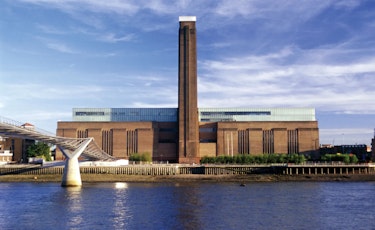
Credit: Britannica
Challenges and Limitations
Despite its many advantages, design thinking in architecture faces some challenges and limitations. One of the main obstacles is the need for time and resources. Design thinking often requires extended periods of research, collaboration, and iterative prototyping, which can be at odds with tight project deadlines and budget constraints in the architectural industry.
Additionally, the successful implementation of design thinking in architecture depends heavily on the willingness of clients, stakeholders, and communities to embrace a collaborative and participatory approach. Convincing all parties of the value of this methodology can be a challenge, especially when it contrasts with more traditional and hierarchical decision-making processes.

Credit: the Division of Student Affairs
The emergence of the design thinking movement has had a transformative impact on the field of architecture. By shifting the focus towards human-centric, sustainable, and collaborative practices, design thinking has revolutionized the way architects approach their craft. From user-centered design and sustainable architecture to adaptive reuse and smart cities, design thinking principles have inspired architects to create innovative and meaningful spaces that address the needs of individuals and communities alike.
However, challenges remain in integrating design thinking fully into architectural practice, particularly with regard to time constraints and stakeholder buy-in. Nevertheless, the continued evolution of design thinking and its application in architecture holds tremendous potential for creating built environments that are not only aesthetically pleasing but also socially and environmentally responsible, meeting the challenges of the 21st-century global landscape.
